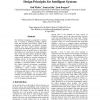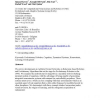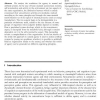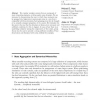ALIFE
2005
14 years 3 months ago
2005
New Robotics designates an approach to robotics that, in contrast to traditional robotics, employs ideas and principles from biology. While in the traditional approach there are g...
ALIFE
2005
14 years 3 months ago
2005
ALIFE
2005
14 years 3 months ago
2005
We consider a hierarchical multicellular sensing and communication network, embedded in an ageless aerospace vehicle, that is expected to detect and react to multiple impacts and d...
ALIFE
2005
14 years 3 months ago
2005
We analyze the conditions for agency in natural and artificial systems. In the case of basic (natural) autonomous systems, self-construction and activity in the environment are two...
ALIFE
2005
14 years 3 months ago
2005
We consider complex systems that are composed of many interacting elements, evolving under some dynamics. We are interested in characterizing the ways in which these elements may b...
ALIFE
2005
14 years 3 months ago
2005
We present a novel formal interpretation of dynamical hierarchies based on information theory, in which each level is a near-state-determined system, and levels are related to one ...
ALIFE
2005
14 years 3 months ago
2005
Recent years have seen the discovery of freely diffusing gaseous neurotransmitters, such as nitric oxide (NO), in biological nervous systems. A type of artificial neural network (A...
ALIFE
2005
14 years 3 months ago
2005
We present a new definition of the concept of representation for cognitive science that is based on a study of the origin of structures that are used to store memory in evolving sy...
ALIFE
2005
14 years 3 months ago
2005
Biological development is a remarkably complex process. A single cell, in an appropriate environment, contains sufficient information to generate a variety of differentiated cell ...
ALIFE
2005
14 years 3 months ago
2005






